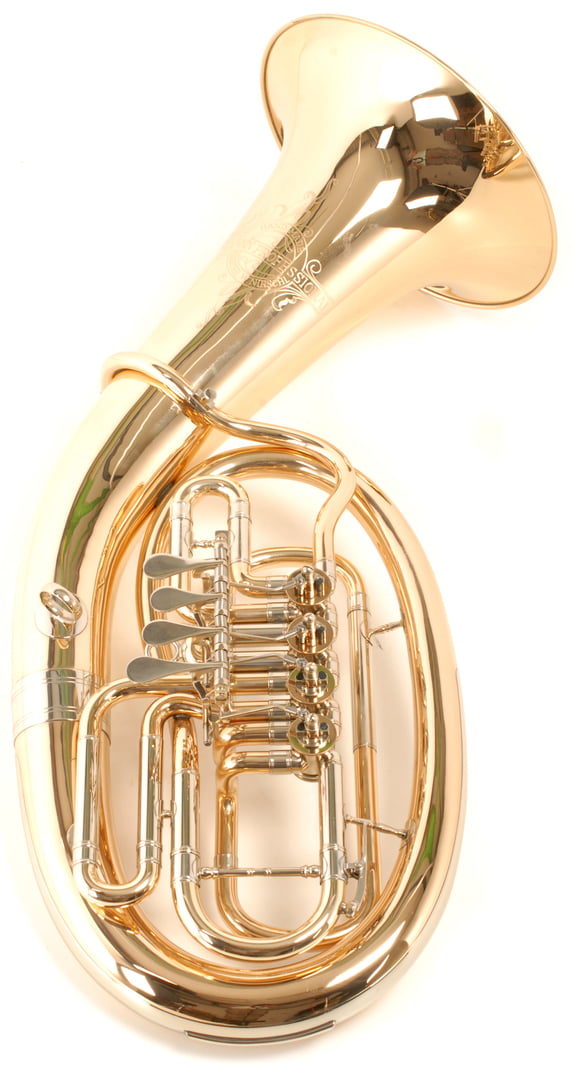3. General Construction of the Instruments
The general construction of tenor and baritone horns is similar to that of other brass wind instruments, for example the trumpet. The instruments consist of several components: the mouthpiece, the tube with the mechanism, and the bell.
The mouthpiece: unlike with most woodwind instruments, the vibration in brass wind instruments is produced by the player's lips and simply transmitted to the air column inside the instrument. While this may sound simple, there are some difficulties in producing sounds in this way, and inexperienced players will tire very quickly. Our two instruments are played with semi-spherical mouthpieces, which are rounder in contrast to the other large class of mouthpiece, the funnel-shaped ones.
The connection between the mouthpiece and the instrument proper is created by the shank which fits perfectly into the tube's mouthpiece receiver thanks to its conical shape. While the diameter of shank and tube changed from instrument to instrument at the beginning, there is now one standard size - unlike the trombone and the flugelhorn, where three sizes are commonly available. Changing from tenor to baritone horn while using the same mouthpiece is now possible.
The tube comprises all parts between the mouthpiece and the bell, for example the mechanism, the heart of the instrument. This includes three to four rotary valves. The rotary valves comprise a valve body with two tubes, which rotates 90° around its vertical axis when the valve is operated. The valve slide and the main tube enter the body at the same height. Brass instrument players will know this type of valve from the German trumpet which is a popular member of symphony orchestras. These valves are a characteristic feature of tenor and baritone horns while also being a counterpart to the Perinet valves which are characteristic of the euphonium.
The bell completes the instrument, and depending on the manufacturer, its diameter can measure from 24cm to 30cm. In both horn types it points diagonally upwards. Bell-front baritone horns are the exception to this rule. Their bell is rotated so that it emits the sound towards the front.
Besides these elements, which are common to all tenor and baritone horns, some manufacturers also offer their customers the option to adjust some aspects according to personal preference.
For example:
- The lead pipe can be raised to achieve better playing comfort
- An adjustable thumb ring to optimise the handling
- Sound equalizer on the main slide
- For baritone horns: a non-permanent fifth valve to add as needed


